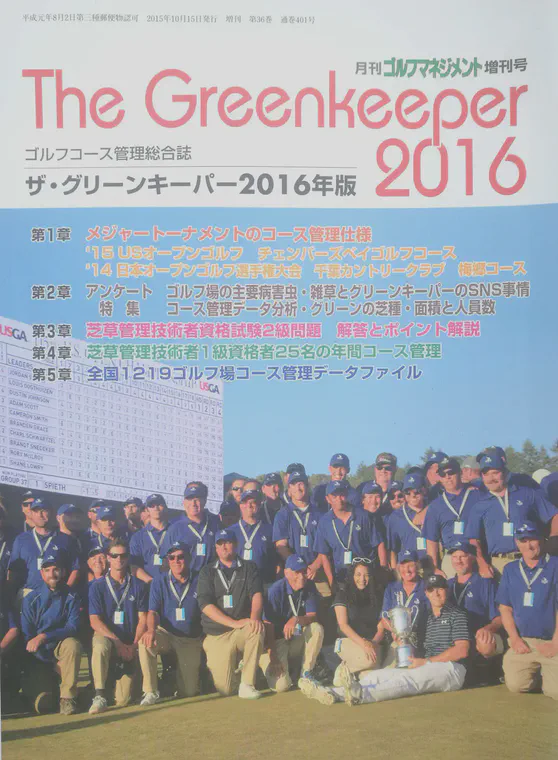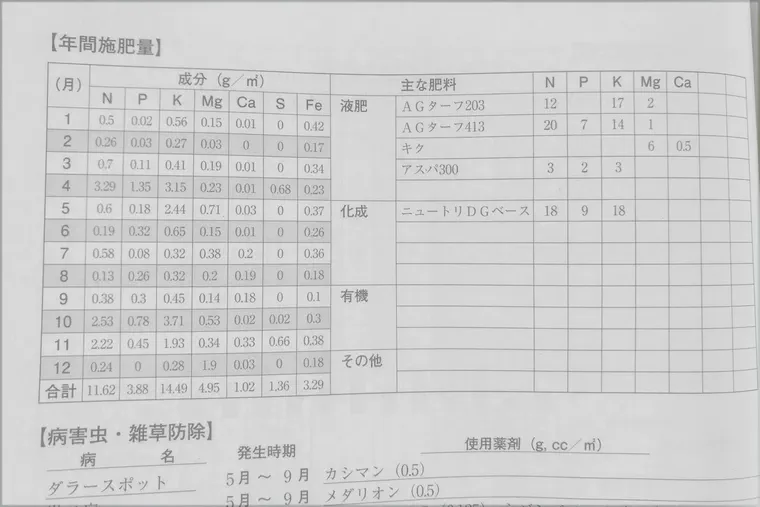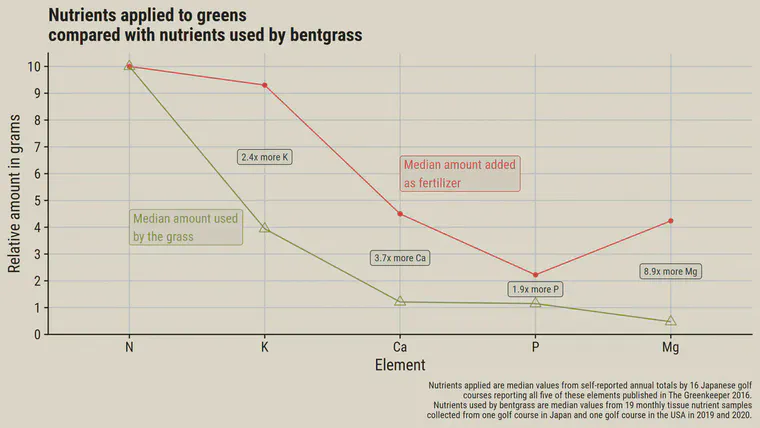Fertilizer supply vs. nutrient use
One of my favorite publications is the The Greenkeeper annual yearbook by Ikki Publishing Company.

This yearbook includes annual maintenance summaries for golf courses in Japan. This is a type of practical information that I find really useful.1
Sixteen golf courses in the 2016 yearbook provided monthly (and annual) totals for N, P, K, Ca, and Mg added as fertilizer.

I have taken these data from the 16 golf courses and report the median value in the chart below. This is adjusted in two ways.
First, the median N supply for these 16 courses was 11.16 g/m2. I have scaled the N and all the other elements by the same factor so that N is at 10 in the chart, and all the other elements are shown in relation to an N amount of 10. The point of the chart is to show relative amounts, not absolute ones. I made a second adjustment by assuming that the P and K in the yearbook are really P2O5 and K2O. In the chart, I’m showing P as 44% of the median from the yearbook, and K as 83% of the median from the yearbook.
For some background information about the sixteen courses from which these data are reported:
- all are creeping bentgrass greens
- 11 have the one green system; 5 have the two green system
- Eight of the courses have 18 holes, four have 27 holes, and four have 36 holes
- The median annual number of rounds played (adjusted to a per 18 holes basis) was 35,667
- The median green size was 600 m2

This is typical (and not just in Japan), to supply more of these nutrients than the grass can use. I often mention this. It’s not that I recommend adding so much of these elements, but I point out that it is customary in many parts of the world to apply considerably more P and K and Ca and Mg than the grass can use.
I’d like to point out two things in reference to the chart above.
- This is ignoring the soil. That is, the 2.4 times more K applied as fertilizer than the grass uses, and the 3.7 time more Ca, and so on, are not even considering that the soil can certainly supply some amount of those elements to the grass.2
- The MLSN method of soil test interpretation accounts for plant use and the soil’s ability to supply each element. It doesn’t make sense to supply twice as much of an element as the grass can use. If the median course were using MLSN, the amount of fertilizer would be a lot closer to the line of plant use, and for most elements would be below the line of plant use because the soil would have ample amounts of those elements.
For example, see topdressing data from the 2018 yearbook. ↩︎
This is also ignoring the amounts of those elements supplied by irrigation water. ↩︎